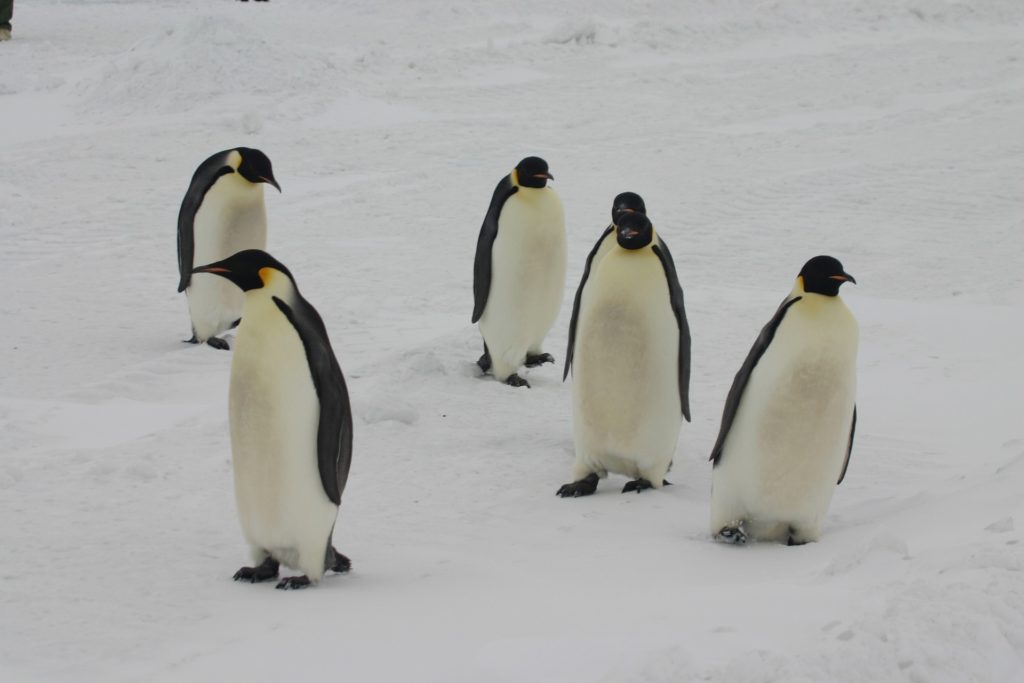
The Emperor Penguin(Aptenodytes forsteri) is the largest member of the penguin family. Emperor Penguins can weigh up to 46 kilograms(101.4 pounds) and can grow to lengths of 115 centimeters (3 feet, 9.3 inches).
| Genus | Aptenodytes |
| Species | A. forsteri |
| Binomial Name | Aptenodytes forsteri |
| Length | 1.1-1.15m(3’7.3”-3’9.3”) |
| Weight | 19-46kg(41.9-101.4 pounds) |
| Diet | Carnivore |
| IUCN Status | Near Threatened |
Physical Characteristics
The Emperor Penguin’s back is a darkish gray and its belly is white. There is a yellowish patch on the side of the rear head and side of the neck. There is a long pink to orange fleshy patch at the base of the lower mandible; the bill is blackish and the feet are gray.
Range and Habitat
The Emperor Penguin inhabits marine and pelagic areas in Antarctica. However this species is vagrant In New Zealand, South America, and some subantarctic islands.

Breeding
Emperor Penguins arrive at their breeding colony from March to April and begin Laying eggs between May and June. The female lays a clutch of 1 egg; only the male incubates the single egg for 62 to 66 days. Emperor Penguins do not build nests; the male incubates the egg by holding it on his feet. Females reach sexual maturity at 5 years old, and males reach sexual maturity at 6 years old.
Diet
Emperor Penguins eat fish, especially fish classified in the family Nototheniidae(notothens or cod icefishes). They also eat krill, and cephalopods.
Predators
Skuas, sea lions, the Killer Whales(Orcinus orca), and the Leopard Seal((Hydrurga leptonyx) prey on Emperor Penguins.
Fun Facts
- Emperor Penguin breeding colonies can be up to 200 km from the open sea.
- Emperor Penguins typically live between 15 and 20 years.
